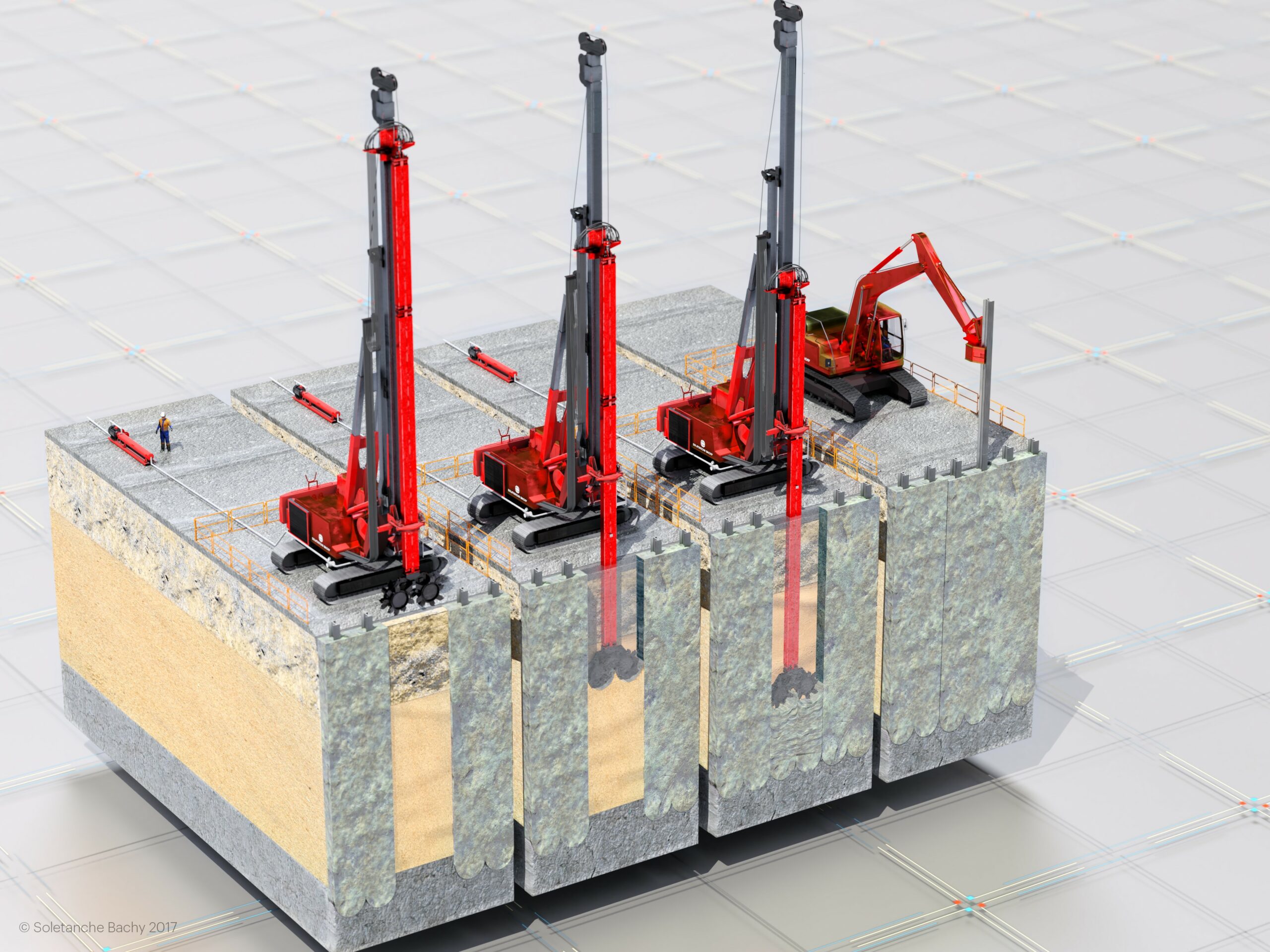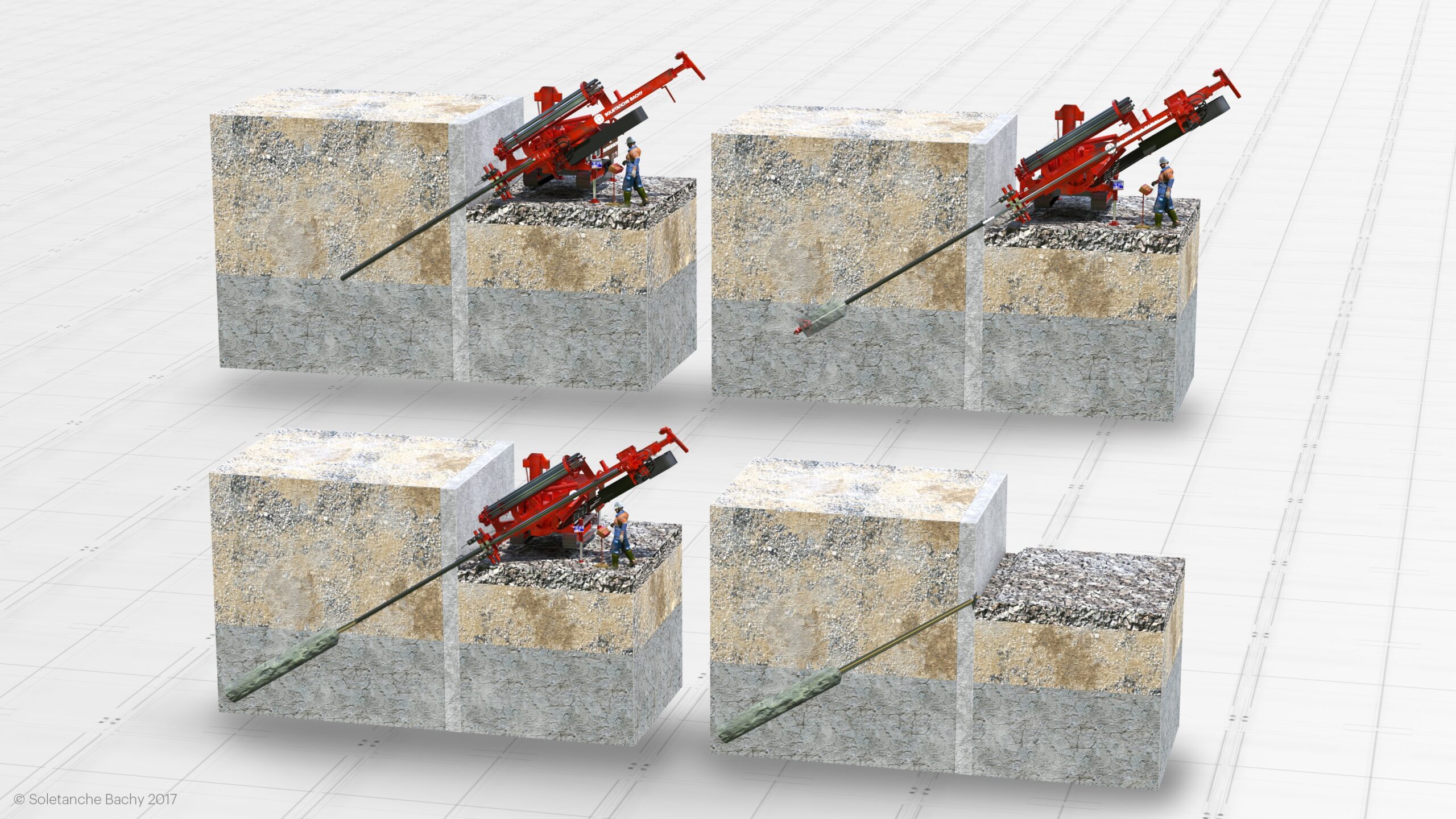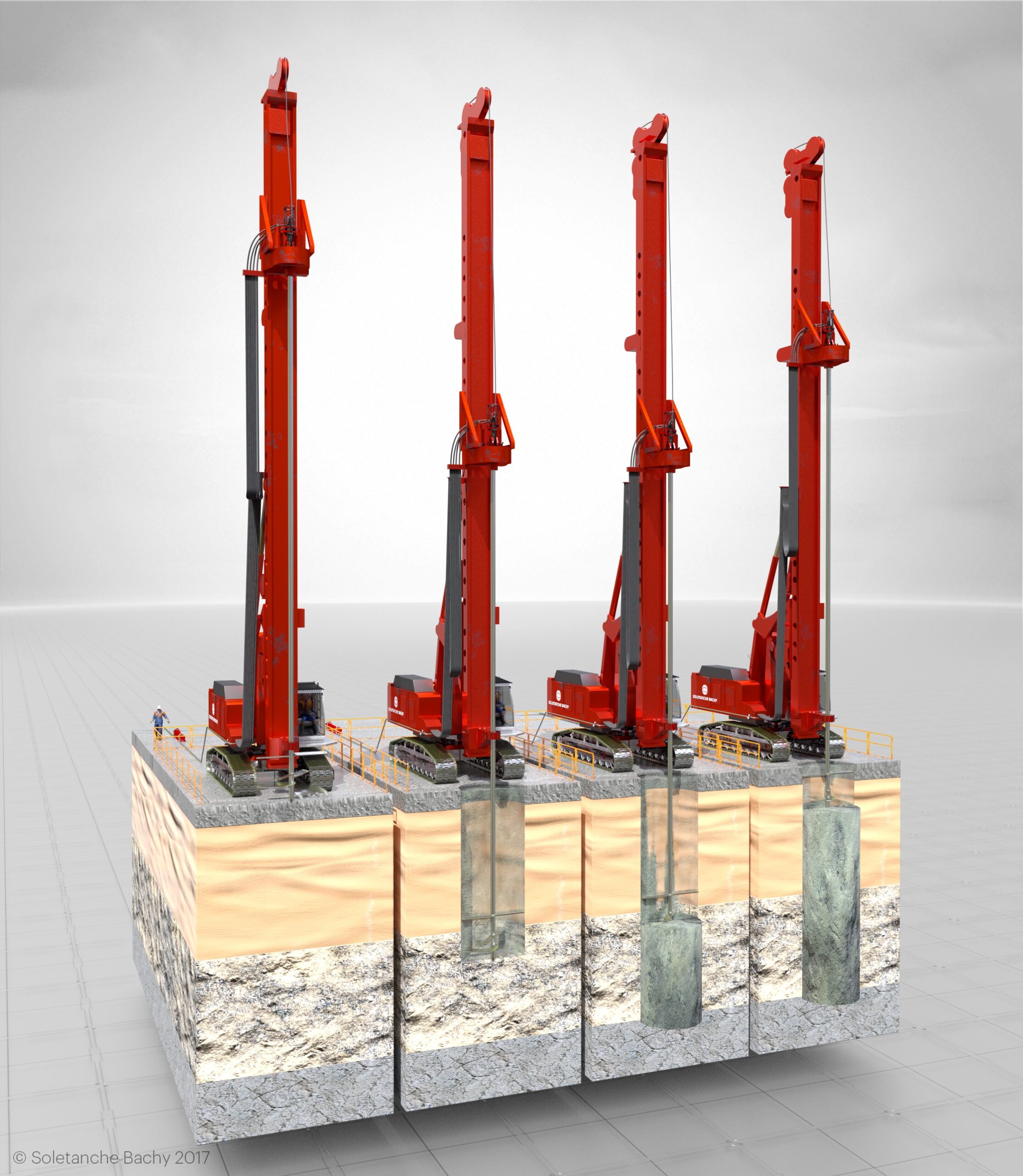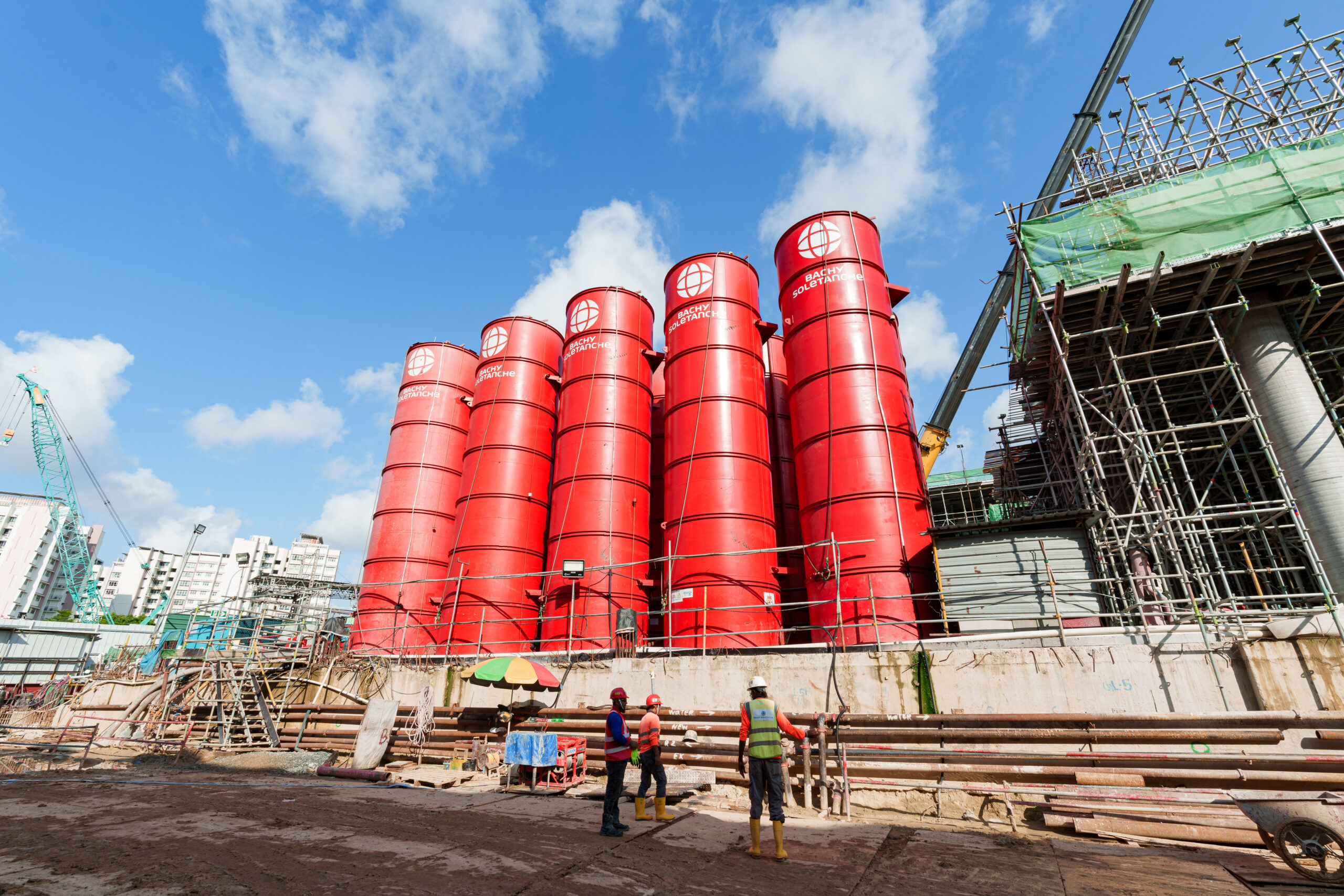Project Description
Deep Soil Mixing uses a wide range of techniques to introduce binder agents with the soil to reinforce the ground.
Deep Soil Mixing is about mechanically mixing soil in situ, incorporating a hydraulic binder (cement, blast furnace slag, lime, fly ash etc) to improve the soil’s mechanical parameters or reduce its permeability. Once formed, the soil-binder mixture forms a columns, panels or continuous elements such as trenches.
On our C903 Bugis Station project, we introduced the horizontal application of our award-winning Springsol technique which proved highly effective in stabilizing the marine clay prior to mined excavation.
Applications

Cut-Offs Wall

Underpinning

Retaining Wall

Ground improvement
The advantages of Deep Soil Mixing
- Ability to adapt to project constraints (applications, geometries, binders, etc.).
- Very low quantities of spoil produced (and in some cases reusable).
- A durable, material with controlled mechanical and hydraulic properties
- Ability to isolate and neutralize soil pollution.
- Time-saving preparatory work.
Discover our other solutions










